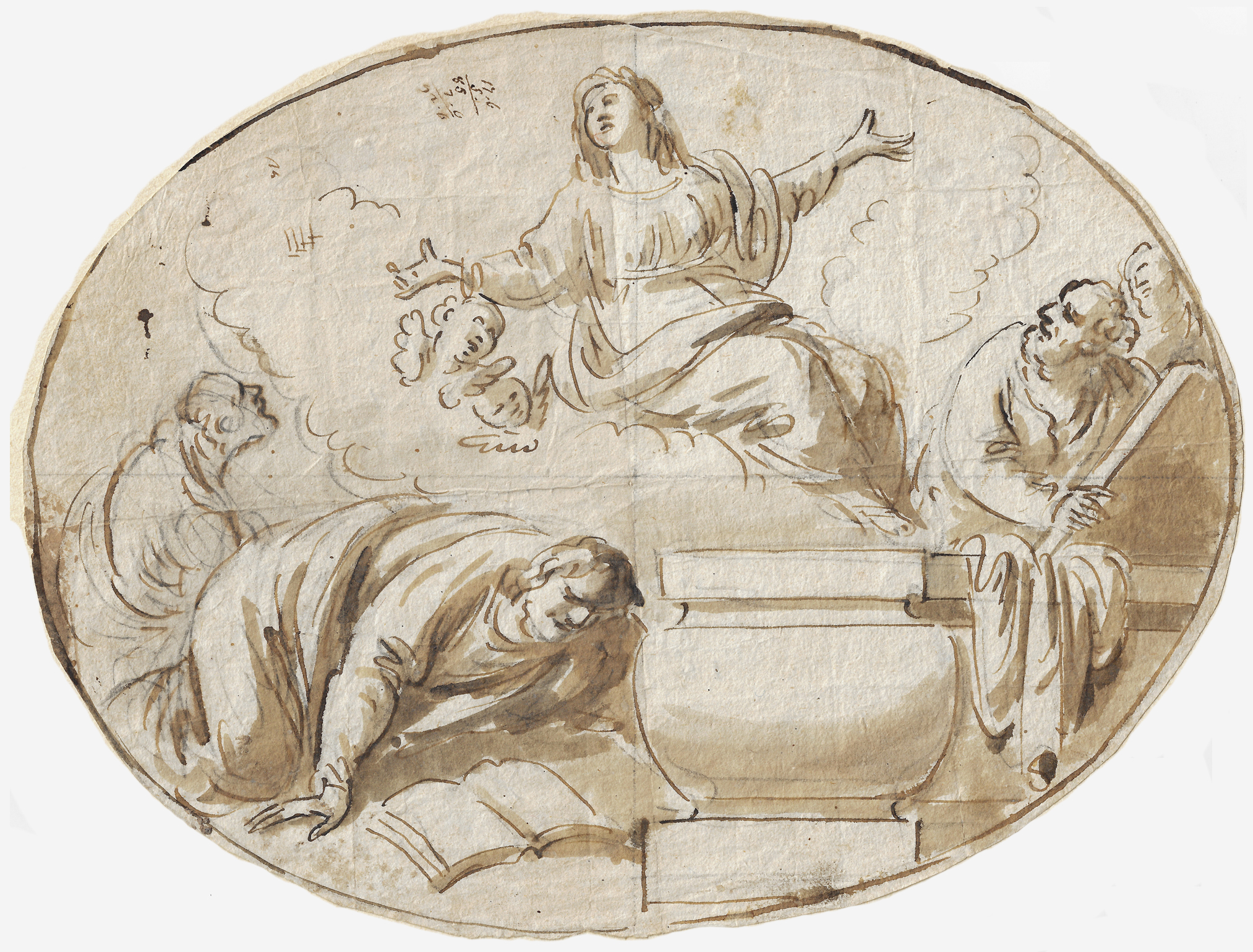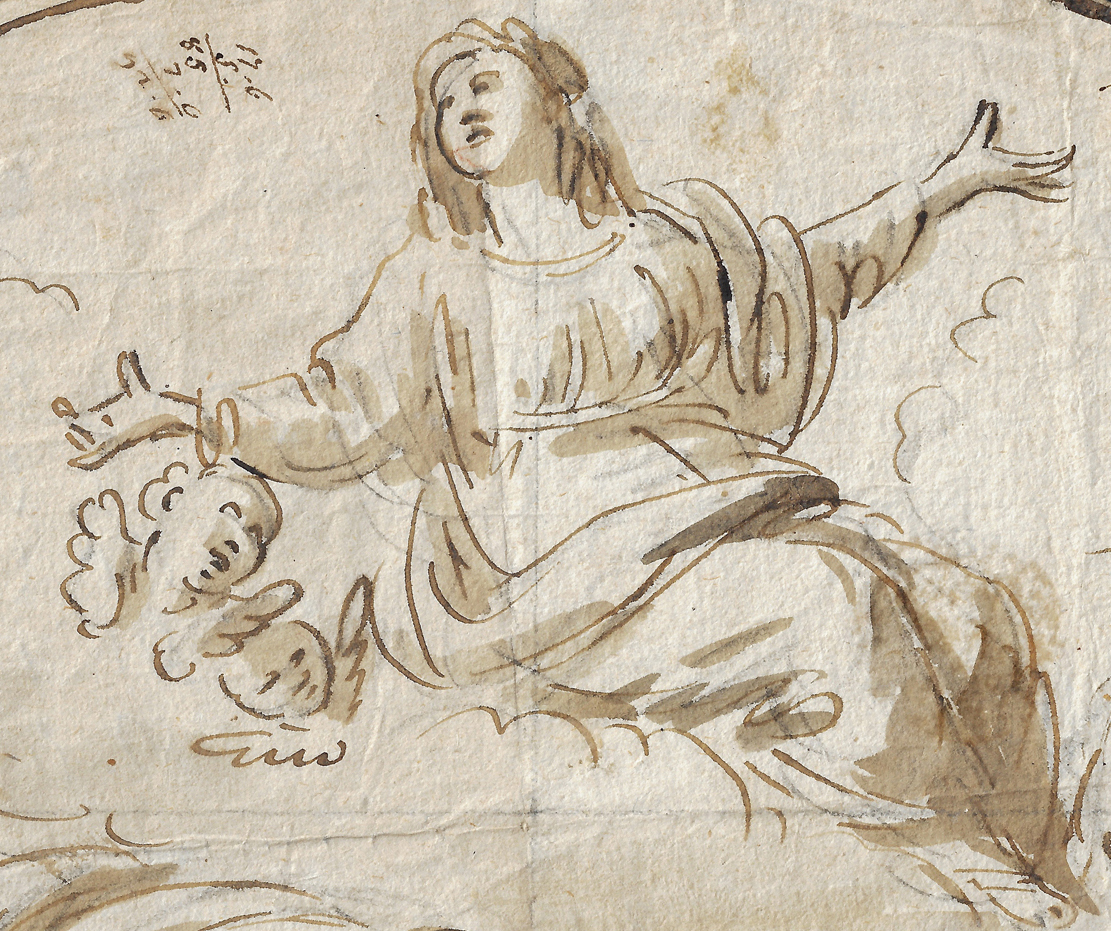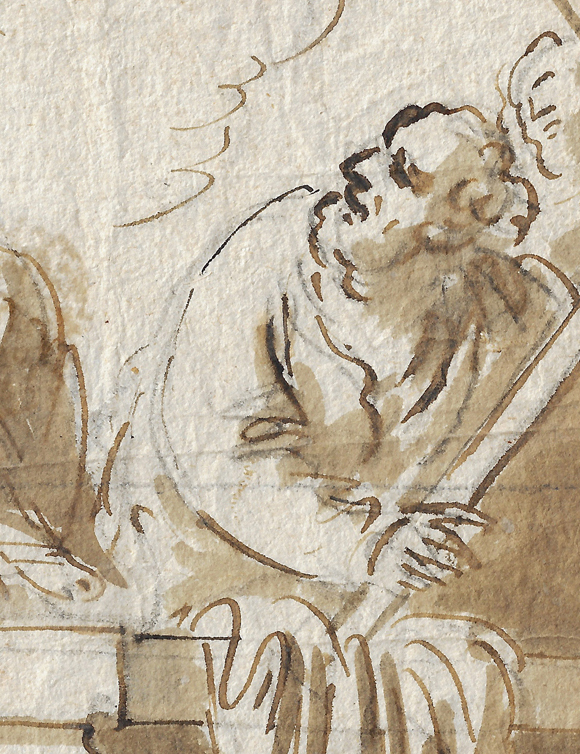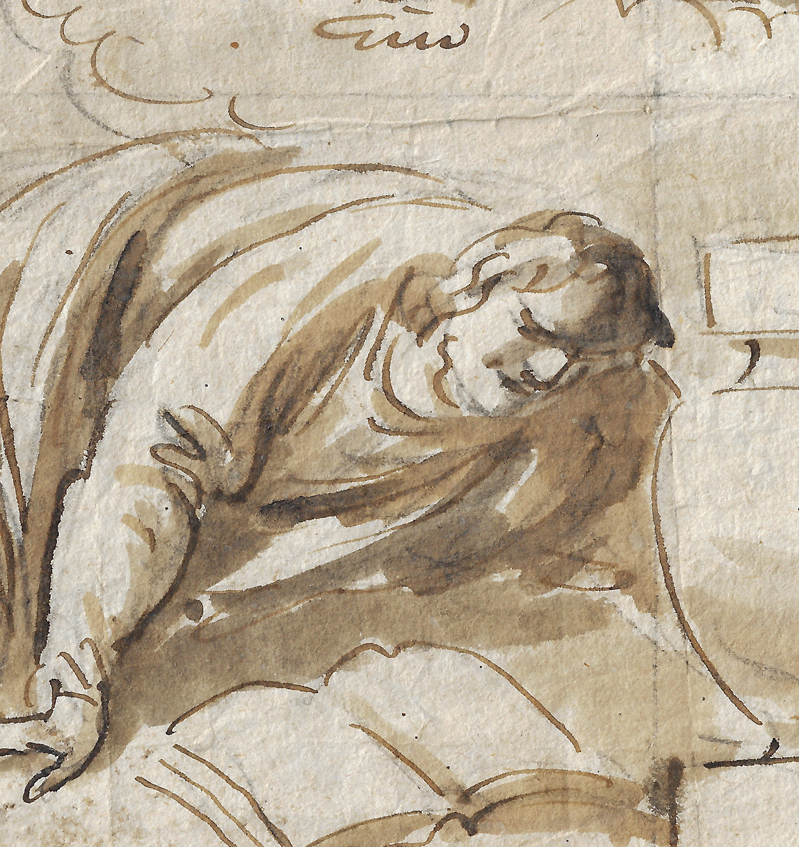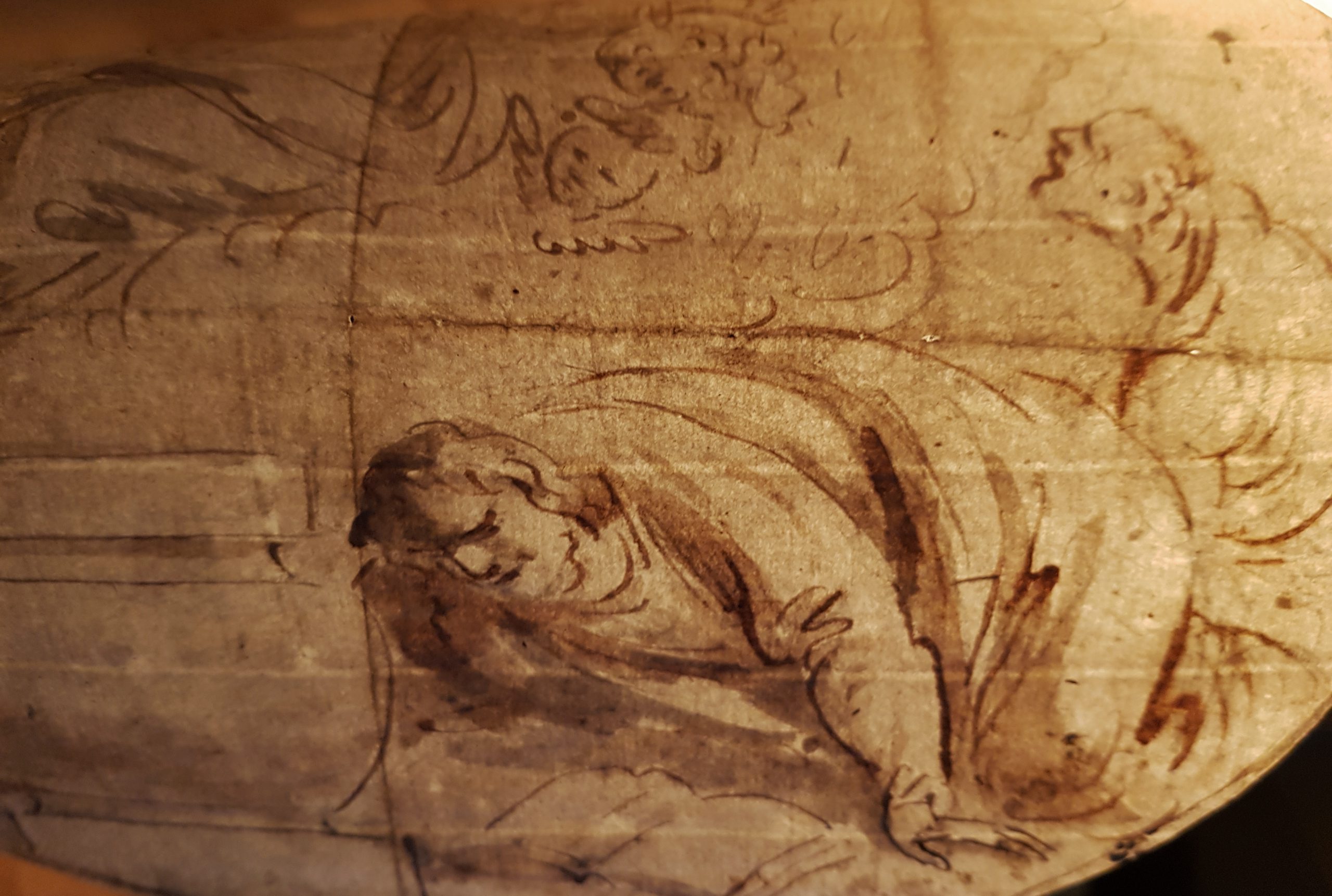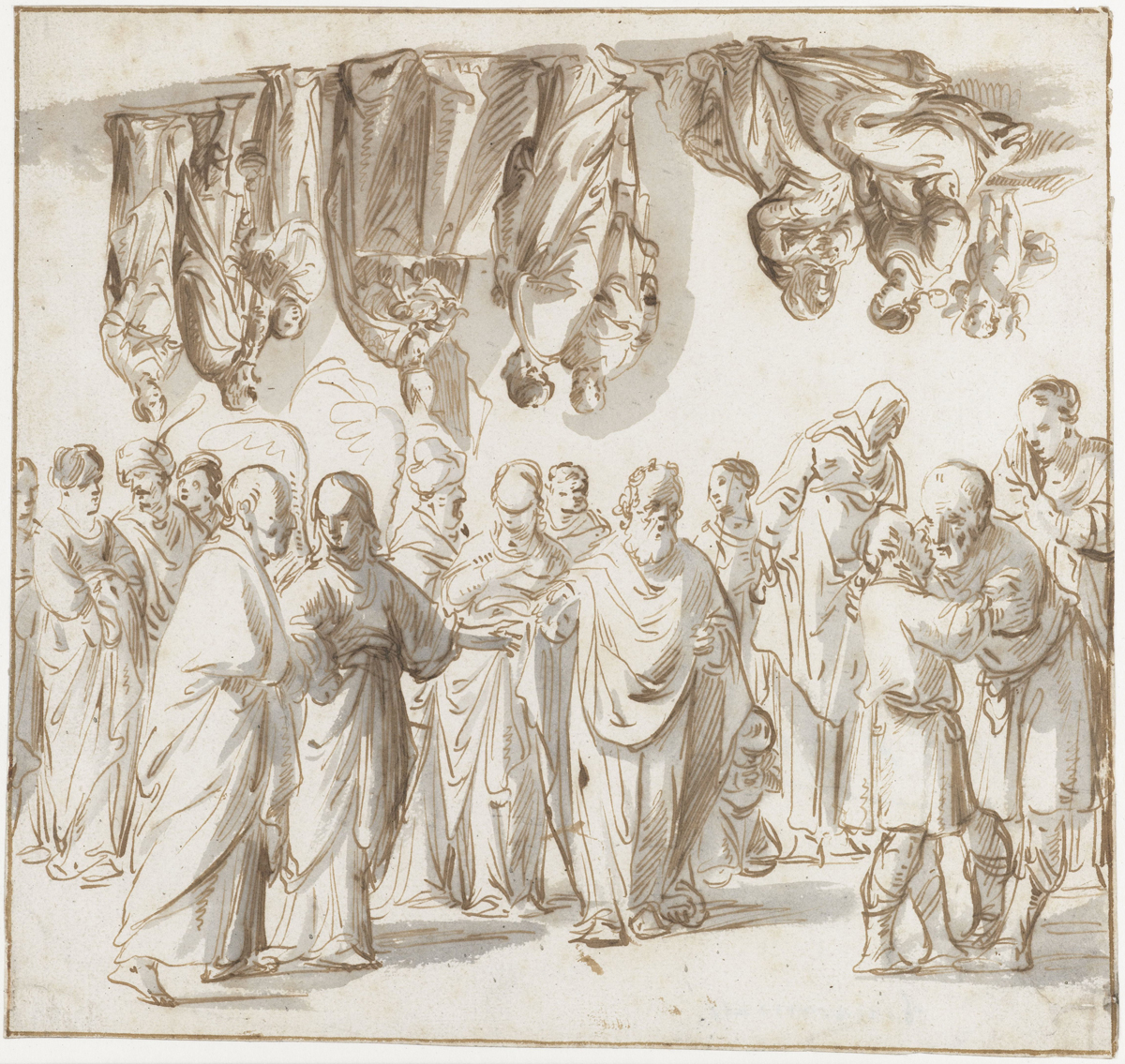PIETER JANSZ (Amsterdam 1602 – 1672 Amsterdam)
Pieter Jansz (Amsterdam 1602 – 1672 Amsterdam)
The Assumption of the Virgin
Black chalk, pen and brown ink, brown ink framing lines, 205 x 273 mm (8.1 x 10.8 inch)
Inscribed with early calculation at the top, in brown ink, possibly by the artist
Provenance
Private collection, The Netherlands
***
Pieter Jansz was born in 1602 in Amsterdam as the son of a cooper, who died in the year of his birth.1 Pieter married Oetje Jacobs in 1633, and lived first in the Wolvestraat and then in a house on the fashionable Herengracht, which he had inherited from his uncle Jacob Jacobs. He was buried in Amsterdam’s Nieuwe Kerk on 8 April 1672. According to the artists’ biographer Arnold van Houbraken, who wrote about Jansz in his Groote schouburgh of 1718–1721, Pieter was a glass-painter and a ‘konstig teekenaar op papier’ (‘an artful draughtsman on paper’), and had been trained in Haarlem by Jan Philipsz van Bouckhorst (c.1588–1631), who also specialised in glass painting. An important group of seventeen windows painted by Jansz survives in the Nederlands Hervormde Kerk in Oudshoorn, near Alphen aan den Rijn, installed between 1666 and 1671.2 Eleven designs by Jansz for these windows are preserved in the Rijksprentenkabinet, precisely drawn and coloured, which would have served as ‘vidimus’, presented to the church authorities for approval.
Among Jansz’s pupils was Jan Pietersz Zomer (1641–1724), who commenced his career as a glass painter and was also active as print maker. He is however most celebrated for his activities as a collector: at the end of his life, he published a catalogue of his collection, which included some 30,000 works on paper, devided over 139 portfolios of drawings and 93 albums of prints. These included three folders with drawings and designs by Jansz, in total some several hundred sheets, and it would appear that Zomer somehow acquired most if not all of his former teacher’s drawn oeuvre, which formed part of his studio holdings.3 They included ‘kapitale’ (large) coloured drawings, presumably like the designs for the Oudshoorn windows, but also ‘raare Crabbelinge, vlug met de pent getekent’ (‘strange sketches, quickly drawn with the pen’).
The present drawing would appear to fall into the latter category. The especially loose and characteristic handling can for instance be compared to a study sheet with figures by Jansz in the Rijksprentenkabinet, Amsterdam (fig.).4 These spontaneous sketches have been called the ‘Lastman group’, as some of these sheets were previously attributed to Pieter Lastman, before Jansz’s authorship became accepted. A third category of drawings, beyond the spontaneous sketches and the finished designs for windows, are Jansz’s designs for cartouches, many of which were made in preparation for engraved maps by the celebrated cartographer Joan Blaeu.
The present well preserved and powerful sheet is an unusual oval drawing by Jansz. The design was first roughly sketched in black chalk, and then eleaborated in swiftly applied pen and brown ink and brown wash. The drawing is divided into four sections by a horizontal and vertical line in black chalk, presumably by Jansz himself, and possibly in order to facilitate transfer to another medium or to a different size. The drawing is likely to be a design for a glass window panel – these were frequently oval in shape, and sometimes set into larger rectangular windows, also in domestic settings. The calculation at the top is possibly in the artist’s own hand, and further illustrates the drawings’s role as a working and purely functional model, rather than for presentation to clients.
Drawings by Jansz rarely come onto the market. Groups of his drawings are preserved in the Rijksprentenkabinet (Amsterdam), the Kunsthalle (Bremen), the Herzog Anton Ulrich-Museum (Braunschweig) and the Kupferstichkabinett of the Staatliche Museen (Berlin).
This drawing is entered in the databases of the Rijksbureau voor Kunsthistorische Documentatie (RKD) in The Hague as a work by Jansz, under reference number 299104.
1. For the author, see Marijn Schapelhouman, ‘Tekeningen van Pieter Jansz., ‘Konstig Glasschrijver’, Bulletin van het Rijksmuseum, 1985, 33, pp. 71-92.
2. Dick Peters, De zeventien gebrandschilderde glazen in de Oudshoornse kerk, Oudshoorn 2003, passim.
3. Schapelhouman, op. cit., p. 71.
4. Pen and brown ink, grey wash, 200 x 211 mm, inv. no. RP-T-1091-344; Schapelhouman, op. cit., p. 88, fig. 22.
